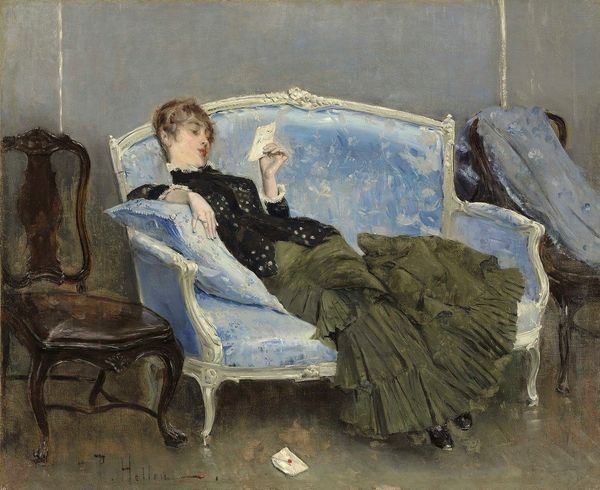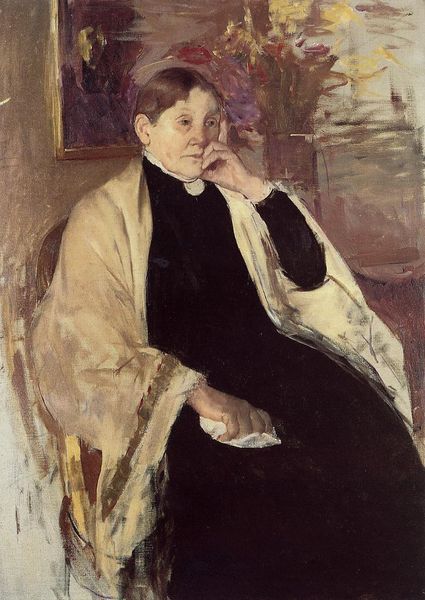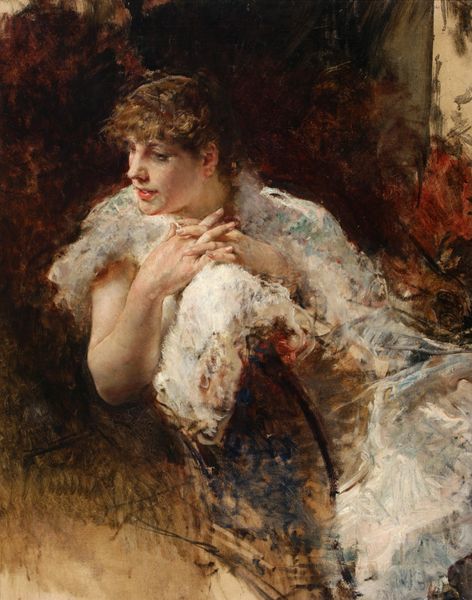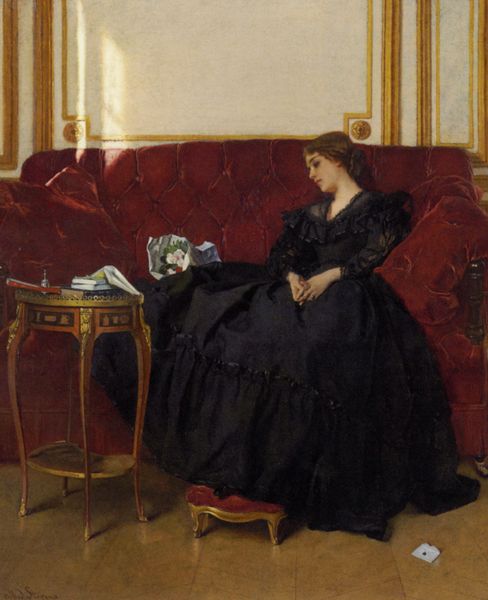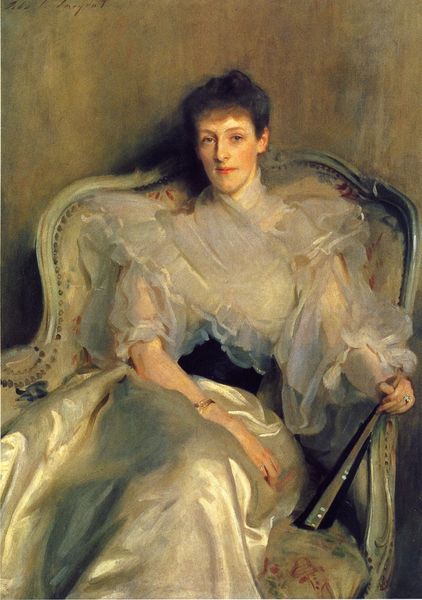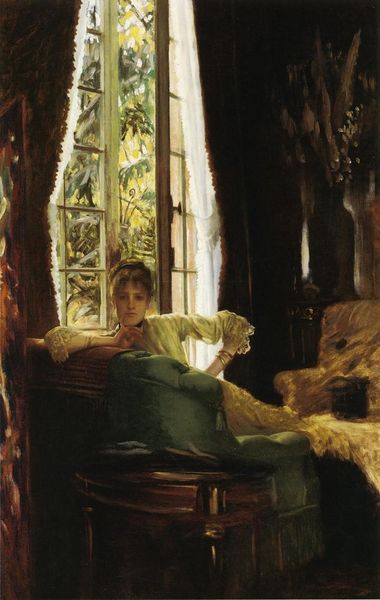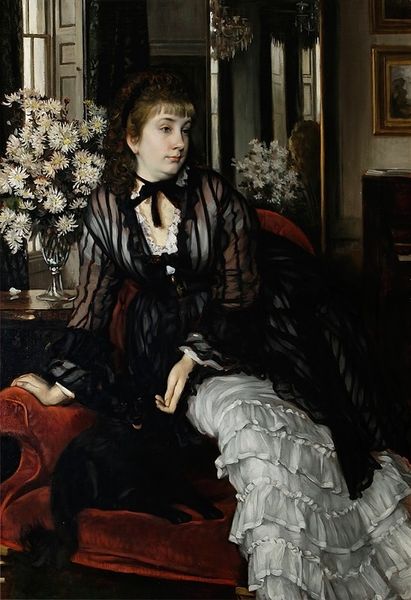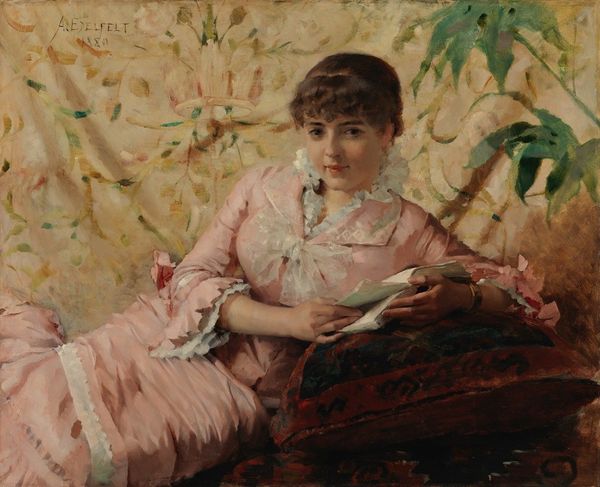
Dimensions: 121.0 x 101.5 cm
Copyright: Public Domain
Editor: This is Fritz von Uhde’s “Portrait of a Lady (Portrait of Therese Karl),” painted in 1890. It's an oil on canvas, and the brushwork feels very expressive. How would you approach interpreting this painting? Curator: Let’s consider the material reality of this portrait. The texture of the brushstrokes, the oil paint itself… They all speak to a specific kind of labor and production, right? What does the act of depicting a woman, likely of some social standing, in this way tell us? Editor: I see what you mean. There's almost a roughness in the brushstrokes, contrasting with the subject's elegance. Does that disrupt typical portrayals of women from that era? Curator: Precisely. We see the raw materiality of the oil paint used to render fine clothing and soft skin. It brings a level of physicality to her depiction that challenges the idealization of the feminine. The labour involved in creating the fashionable attire she is wearing contrasts with her leisure. How does the drape of that black fabric influence your thinking? Editor: The dress itself looks very… heavy. Considering the material cost and labor needed for such an item, its somber hue feels loaded with meaning, like perhaps social restrictions imposed upon her. Curator: Good observation. It’s important to examine the socio-economic context that enabled the creation of both the portrait and the lifestyle it hints at. How does the impressionistic technique impact how we perceive this ‘lady’? Editor: It almost democratizes her. The fleeting brushstrokes give her an accessibility that feels less about idealizing her position and more about capturing a moment in time. It's fascinating to think about the social statements in the material choices. Curator: Yes. And, also about consumption. These things signify and enable specific class realities. Consider art, too, as a commodity! Understanding all of this really lets us dig deeper into this portrait. Editor: This perspective has reshaped my understanding. It's no longer just a depiction of a lady, but also a window into the labor, materials, and social structure of the time.
Comments
stadelmuseum almost 2 years ago
⋮
This likeness of his favourite model, "Therese Karl", is one of the few portraits the artist ever painted. Uhde was generally known for his religious and genre-like scenes. Therese was a dancer at the Royal Court Theatre Ballet in Munich and probably also Uhde's mistress. In spite of the melancholy pose and black dress enlivened by delicate light reflexes falling through the airy white curtain, the young woman looks relaxed and anything but gloomy. Standing between Realism and Impressionism, Uhde masterfully captures the different textures, which lend the painting its lightness and transparency.
Join the conversation
Join millions of artists and users on Artera today and experience the ultimate creative platform.
